Complete Guide to the Dress Code in Iran – What Female Tourists Should Wear
Dress code – What female tourists wear in Iran – Women should wear a headscarf (hijab), to cover both head and hair, and opt for comfy-fitting clothing that covers their arms and legs.
Women planning a trip to Iran will be preoccupied with four questions: What should I wear? How should I behave? Will I be safe? What is the dress code in Iran?
This information aims to give practical advice, dispel preconceptions and reassure; it is based on our own experiences and those of female travellers we have encountered on the road.
Finally, you probably want to know how to dress in Iran so you can respect the local culture, and, especially as a woman feel safe and comfortable without getting too many stares.
Explore Ancient gems & Iranian cities you ever curious about on an action packed trip. Explore Best Deal Iran Tours →
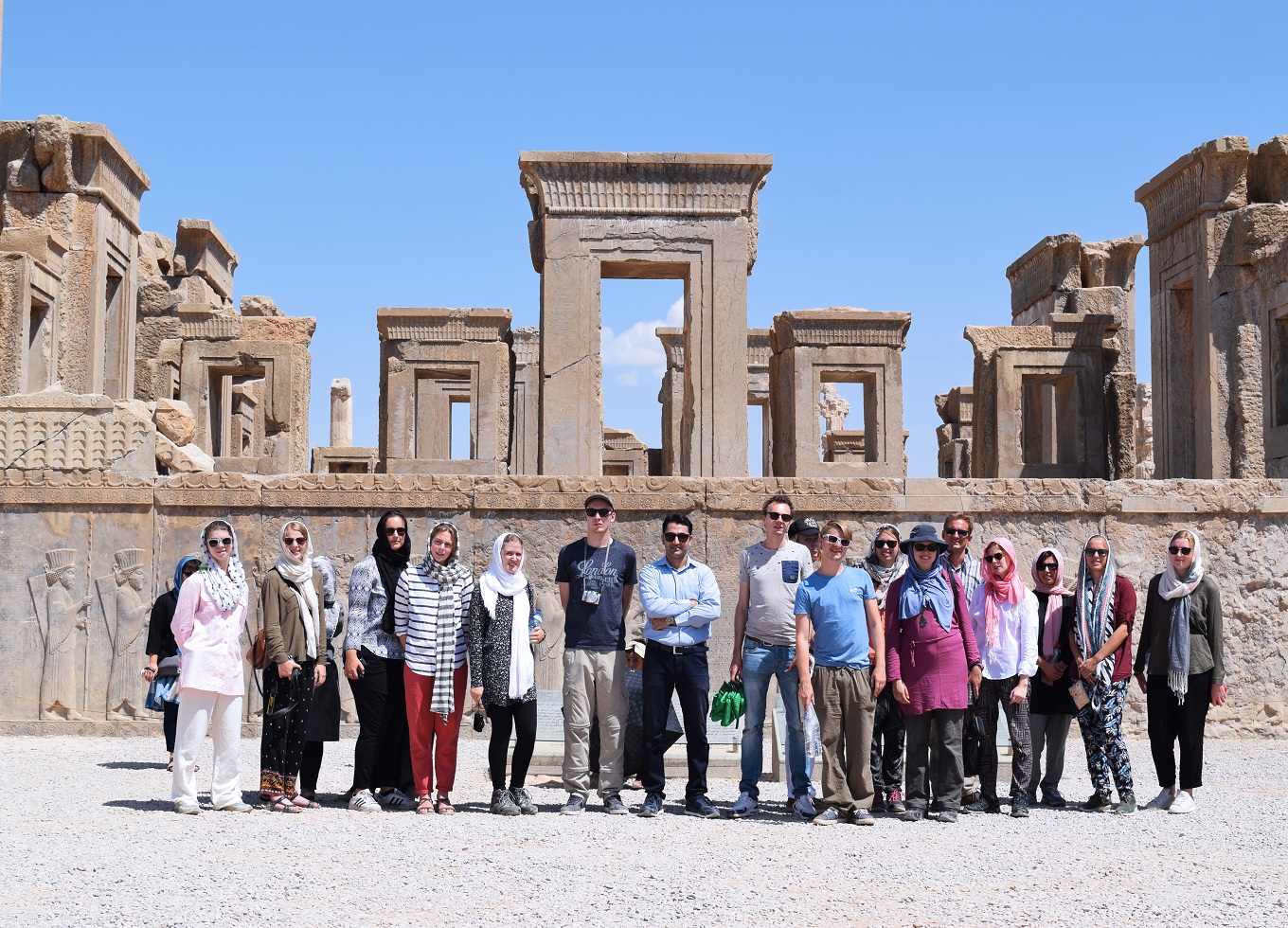
Dress code: What to Wear in Iran?
Technically, tourists must follow a dress code in Iran by something similar to Iranian women, such as long jeans, a tunic, or a long dress called a “manteau” that reaches above the knees. In some religious places like mosques and shrines, you must cover your hair and wear more modest clothing.
Furthermore, female tourists will find that Iranian dress rules are not that of imposition and an inconvenience. Or, they might be a fashion nightmare: sourcing attractive and appropriate clothing can be a real challenge, and headscarves – however attractive the material – almost always look frumpy.
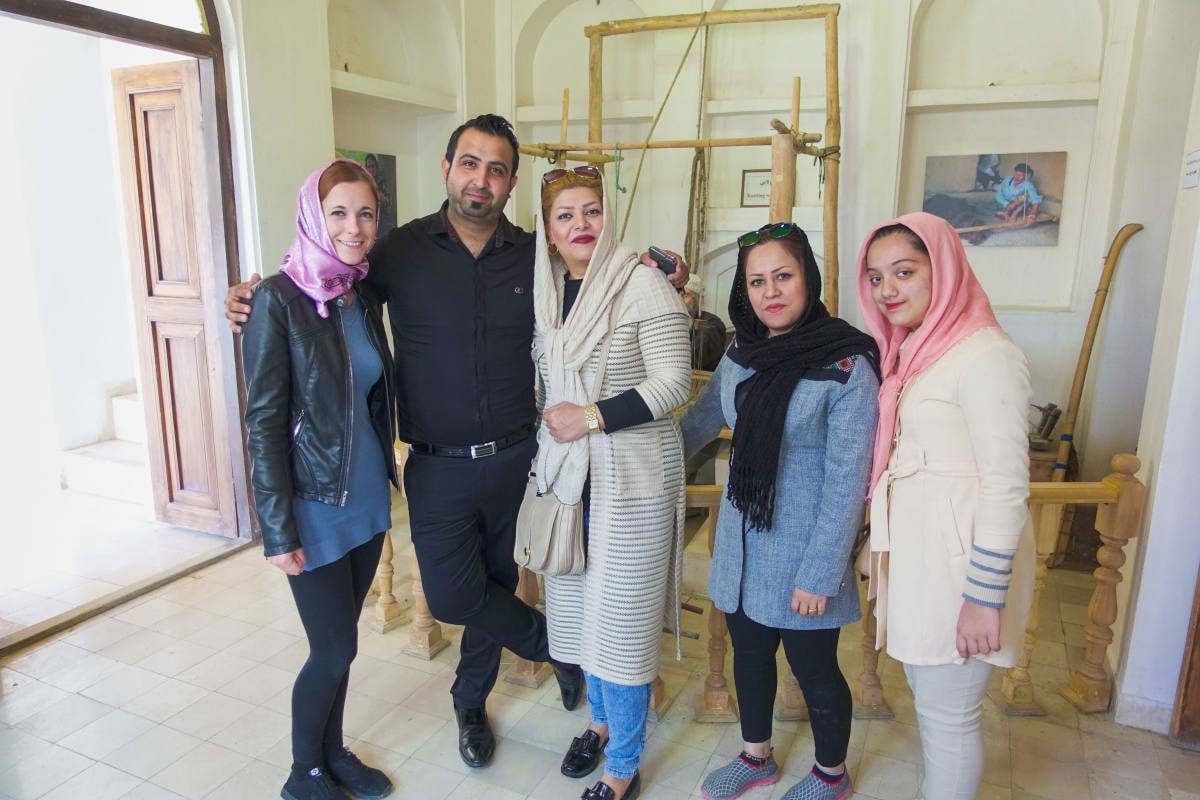
What is Hijab dress code in Iran?
Since the 1979 revolution, all women in Iran, including female tourists, must wear loose-fitting clothes to disguise their figures. They also need to cover their hair. This style of dressing is known as hijab, which generally refers to “modest” dress and specifically to hair covering.
Even though its flexible and not as strict as it used to be, however, signs in public places show officially acceptable versions of hejab: the chador (literally ‘tent’ in Farsi), an all-encompassing, head-to-toe black garment held closed with hand or teeth; or a manteau (shapeless coat or coat dress) and a rusari (scarf) covering the hair, neck and décolletage.
Girls must start to wear hejab when they reach puberty, but many start from a much earlier age (this depends on how conservative the family is), this is pretty much depend on the where in Iran they live.
However, things have changed, and nowadays, women in Iran wear much more comfortable clothing that doesn’t have to be fully black, unlike 30 years ago.
When it comes to what to wear in Iran as a female tourist, my main advice is to wear clothing that is modest and comfortable.
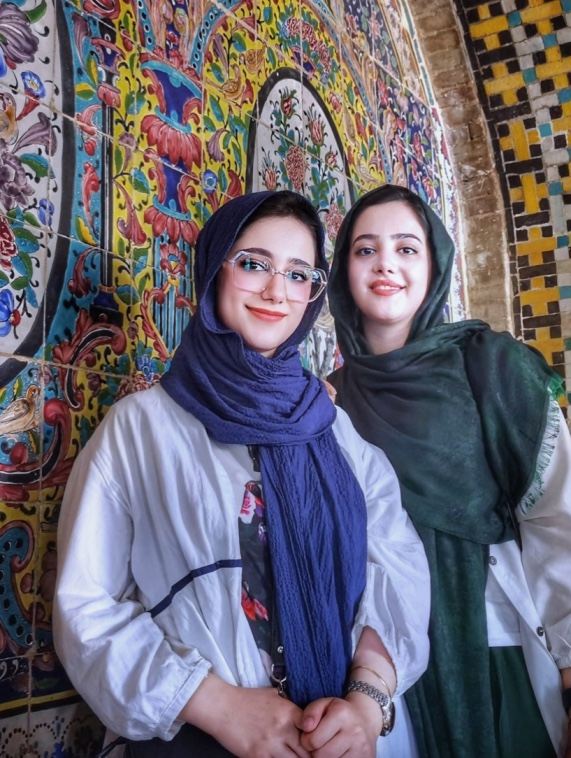
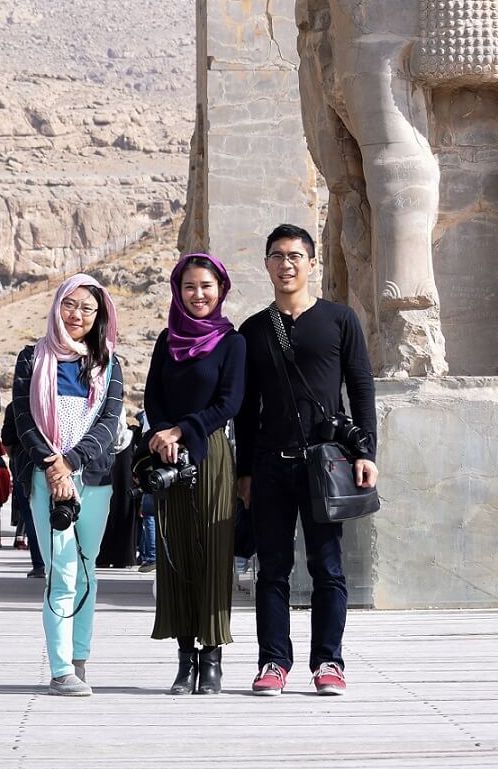
Iran dress for females – Wear like a local
In reality the dress code in Iran is more relaxed, open to interpretation. You often see young women in larger cities wearing figure-hugging manteaus (often tightly belted trench coats), skinny jeans, high heels, and colorful scarves that reveal plenty of hair and neck.
However, in the smaller cities, towns & villages this rarely happens – the chador is common and those who don’t wear it are clad in an ensemble of shapeless coat, black pants, sensible shoes and a maqna’e (nun-like head scarf, or wimple). Colour schemes are uniformly dull.
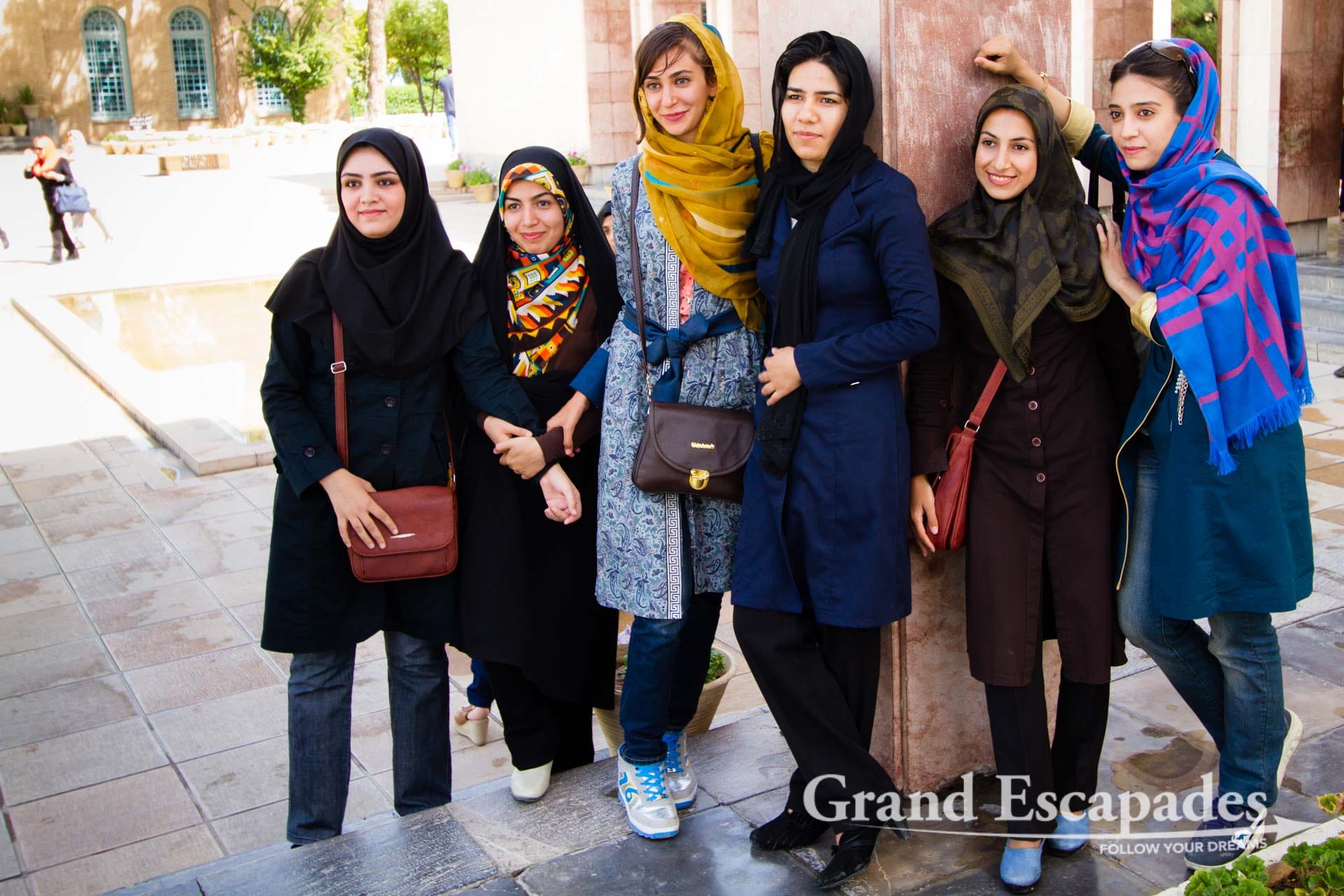
Can I wear a colorful dress in Iran?
YES YOU CAN. As far as color is concerned in dress code in Iran, there is no restriction on it, you can wear pretty much any color you like and the fact is that when you are in Iran you may find yourself through the variety of designs and colours of headscarfs available everywhere from the markets to bazaars and the shops in the streets.
The headscarf is also a form of fashion item amongst women in Iran – square, rectangular, big, small, silk, cotton and whatever you name it.
Fortunately, as a female tourist, you will not be judged when it comes to hijab dress code in Iran, and few Iranians will bat an eyelid if you have your fringe or a bit of neck or hair out of your headscarf.
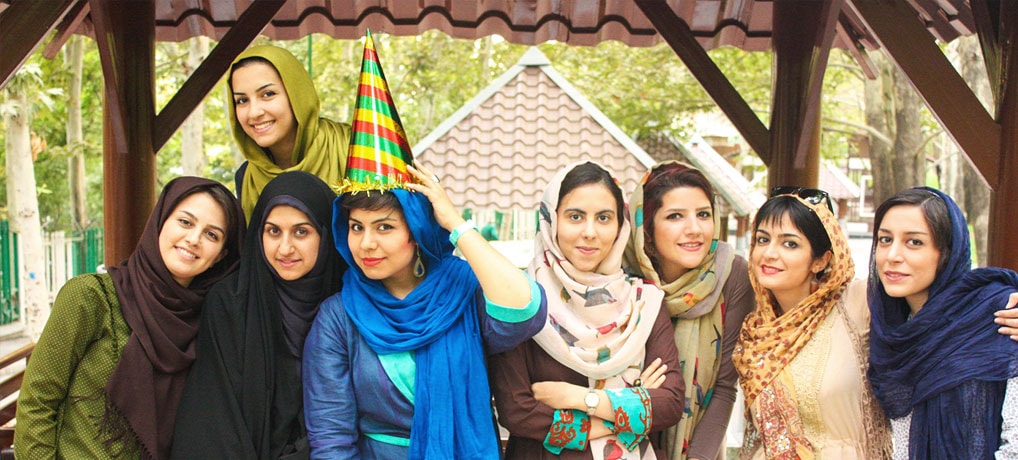
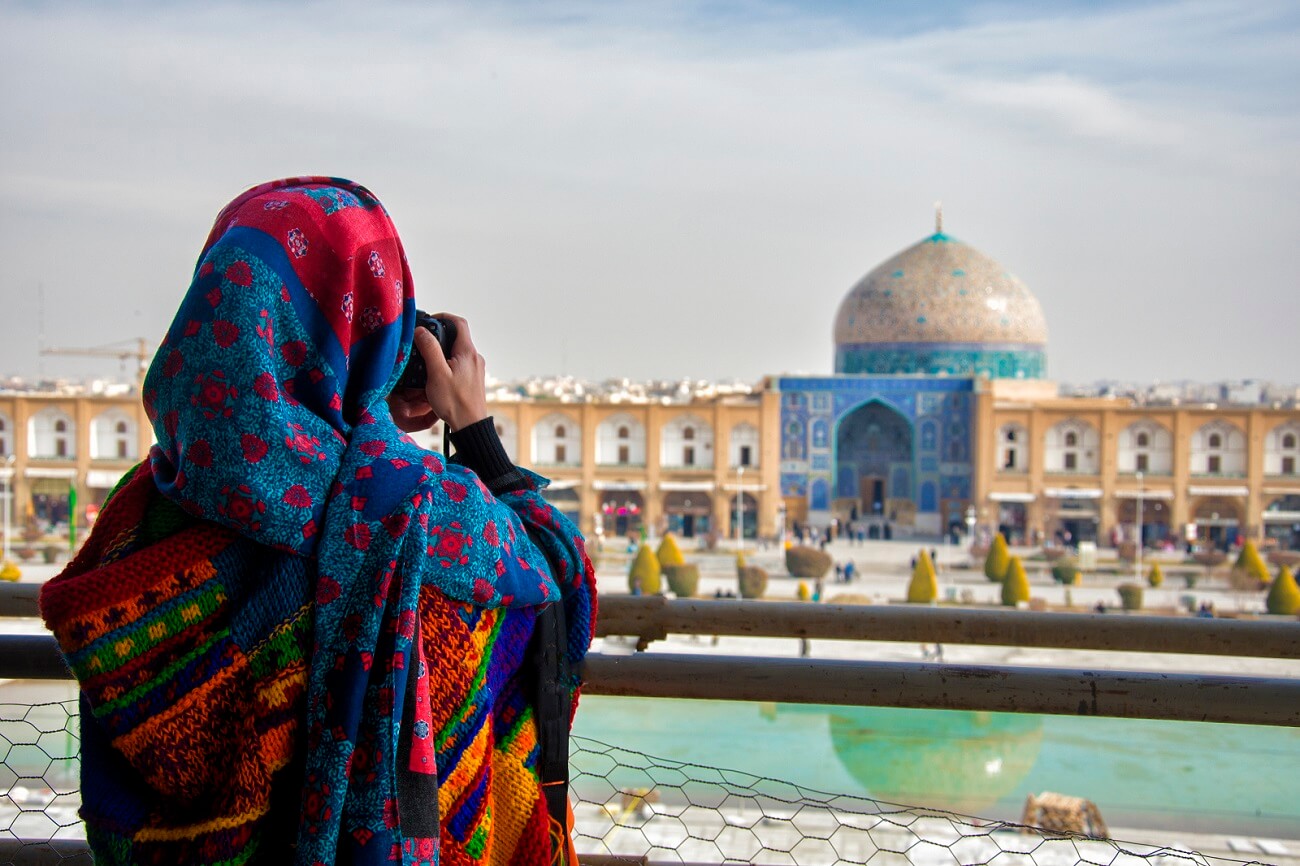
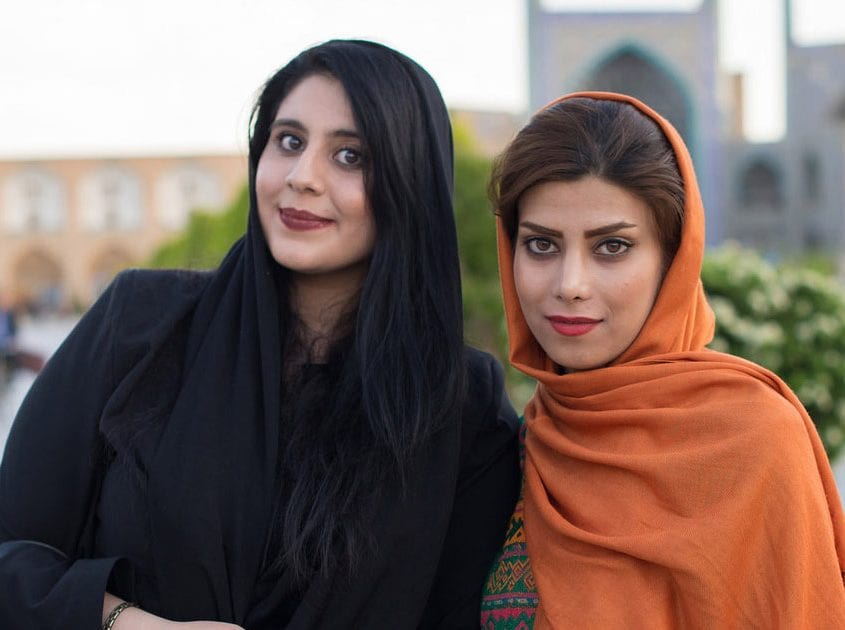
Iran Dress Code – Preparing for the trip
The dress code of Iran is something that most tourists, including men, want to research before visiting. Here, I share ideas for what to wear in Iran as well as rules regarding clothing codes for both females and males.
Wearing headscarf in Iran
The biggest challenge that you’ll encounter is keeping your scarf on. Silk scarves aren’t much use, as they tend to slip off; the only way to make them work is to tie them under the chin babushka-style.
Wool headscarfs work better, but not if it’s too fine and slippery. Your best bet is textured cotton, which tends to adhere to hair more effectively and slips less.
Make sure if your scarf is wide enough to openly (NO NEED TO TIGHTEN IT LIKE A BURQA ABAYA) cover enough of your hair. Practice before you leave home or just look at the photos we uploaded on how to wear a headscarf in Iran.
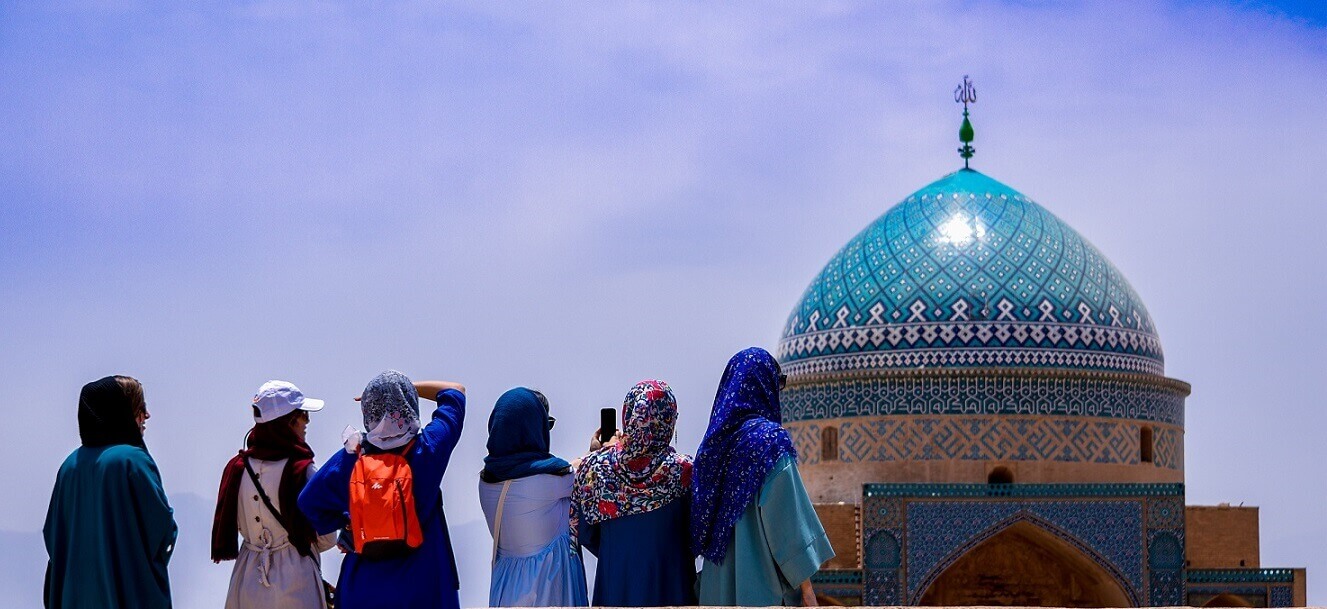

Some travellers wear a thick elasticised headband and fasten their scarves to it with safety or bobby pins, ensuring that their scarf doesn’t slip – this can work well with silk and fine cotton, so is worth considering if you are travelling here over summer and want to wear something light.
Furthermore, local girls, wearing their scarves as high and as far back on their heads as possible. This is relatively easy to do if you have long hair (the scarf is draped over a high ponytail or bun, which anchors it), but it’s impossible for those with shorter hairstyles.
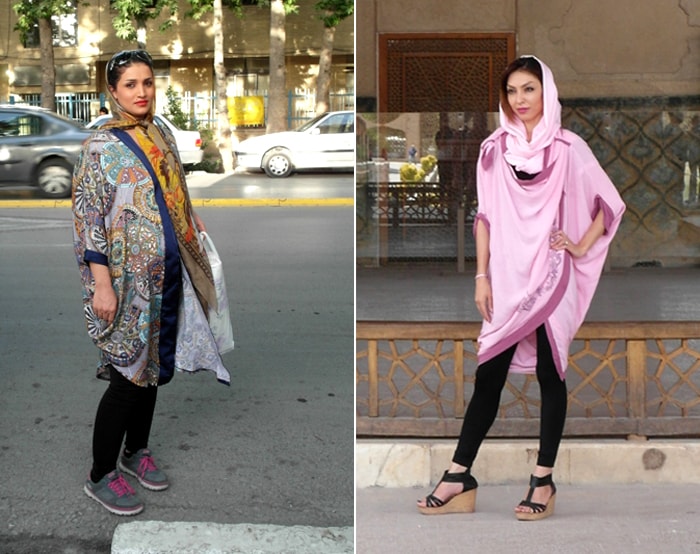
Manteaus (Long dress to cover the lower waist, up to knees)
Wearing manteau in Iran has a fashionable ring to it, and most of the local styles are now quite modern, tight and shorter, and in a good design.
The majority are made from polyester or cotton. The trench-coat style is more attractive (and is the most popular version for fashion-conscious Iranian women), but it can be hot and uncomfortable – remember that your manteau will need to stay on in restaurants, cinemas, shops and other interior public spaces.
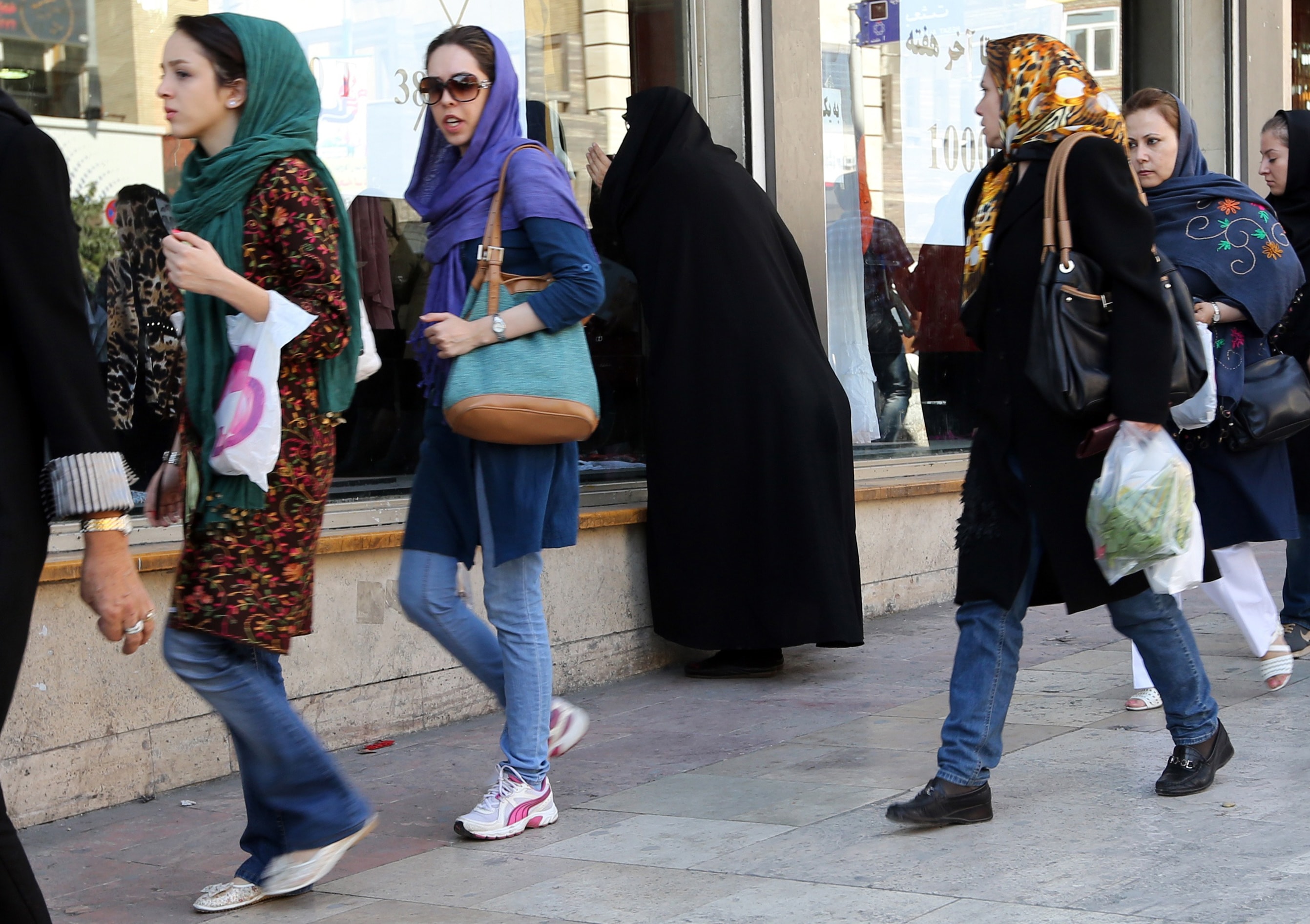
As you see through the photos i’ve uploaded – To find out most comfy style of what to wear in Iran, the tight-comfy-fitting manteaus going down to the mid-thigh are the most comfortable form of outerwear.
These can be worn over T-shirts or jumpers (sweaters) and a jean or legging.
Bring them from home – or get one, once you land in Iran. In summer, you’ll need to wear something light – long peasant blouses and tunics made with natural fabrics work well, as do shalwar kameez, a long shirt or tunic worn over baggy pants.
If you’re coming overland from India or Pakistan you’ll have plenty of opportunities to purchase these along your journey and you’re good to wear them in Iran.
In addition, it is completely Okay to wear manteaus over a jean of any color. Or, wear long skirts to cover up to your ankles, with long sleeve blouse and a head scarf.
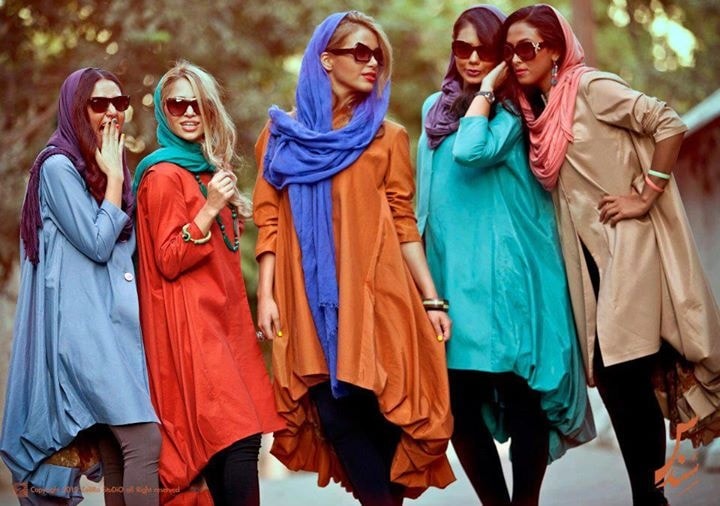
Chadors (head-to-toe long black veil)
I heard from my father that Chador is originally from Iraq – this is a long front-open often black garment to cover all your body. The only times when foreign women should wear a chador is when visiting religious shrines. In these instances, the chadors can almost always be borrowed onsite.

Respect local culture (Etiquette & culture behavior)
It is important to be aware and respect the local customs and culture, specially regarding dress code and behavior. Women are expected to dress modestly in Iran, covering their hair and avoiding tight or revealing clothing.
Half-truths and stereotypes about women exist on both sides of the cultural divide: some Westerners assume that all Iranian women are black-cloaked, repressed victims, while some Iranians, influenced by foreign movies and media, see Western women as ‘easy’ and immoral.
In restaurants and teahouses, head to the separate areas set aside for women and families where these exist. On city buses, use the women’s entrance in the middle of the bus and sit at the back with the other women.
On intercity buses you can sit in any part of the bus, but you should always try to sit next to a woman (it’s OK to sit next to a Western male you are travelling with).
Shaking hands with Iranian men are not a big deal, however, wait, till they initiate this.
Will I be Safe traveling as a solo female in Iran?
Violence against foreign women and tourists is almost unheard of in Iran. We rarely hear about instances of misusing and an assault against female tourists in Iran.
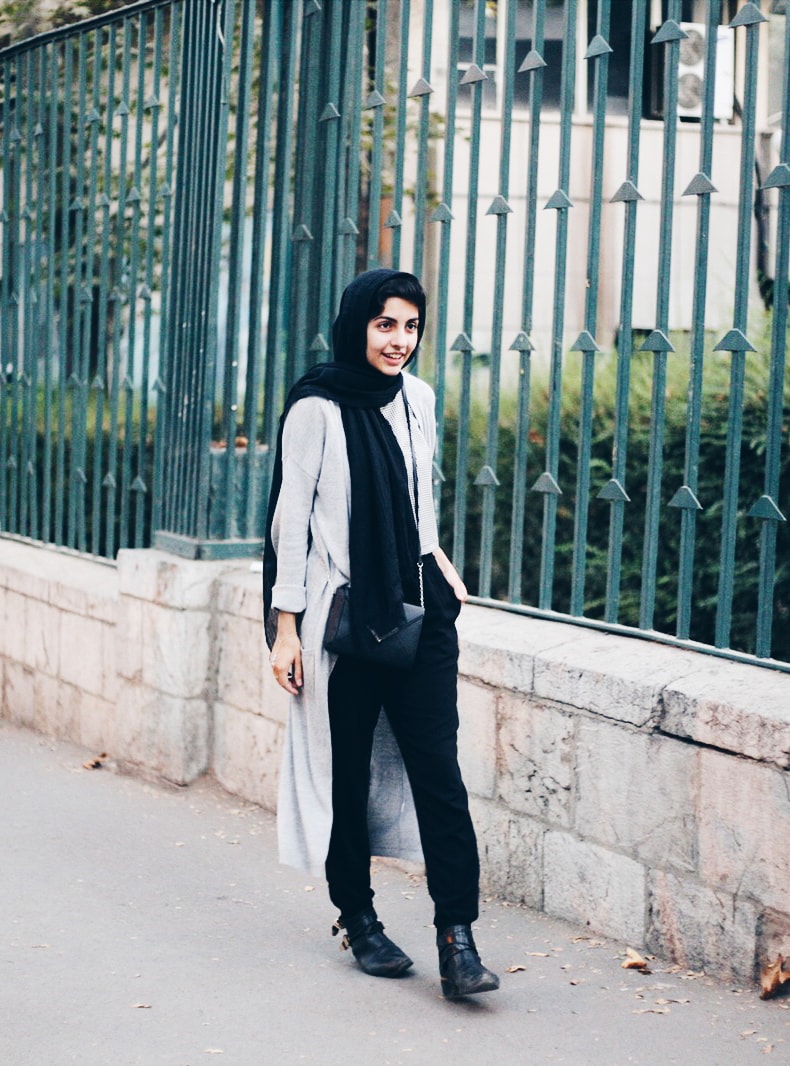
What Should I Bring?
If you use tampons, take enough to last your whole trip. They’re expensive and very hard to find. Sanitary pads are widely available at any phramacirs. It’s also handy to take some plastic bags for carrying out your toilet paper, tampons and pads from toilets that don’t have rubbish bins.
Loose clothing is your friend
Given the high temperatures in summer, then wearing loose fitting light colored clothing in Iran is a must. Just like long flowing skirts, loose shirts or loose cotton pants to allow the air to move and feel more breathable.
I saw female tourists on long maxi dresses & loose trousers with a vest top and a loose shirt over the top.
Generally, it’s best not to show any skin at all, except for your ankles and feet. I don’t think anyone would have asked me to cover up, but given the strength of the sun, I didn’t want to be too exposed anyway.
Don’t be afraid of colours
Although you might still see, specially in smaller town, some local in Iran wearing somehow black clothes, this doesn’t mean you have to be following them and wear the same.
Formal Dress Code in Iran
In Iran, a suit is generally the standard clothing for men at business and formal events; however, businesswomen typically wear a “Manteau” and a scarf. In contrast, a notable distinction in men’s business style is the absence of a tie, particularly in government sectors and affiliated corporations.
Nevertheless, this doesn’t prevent foreign travelers from wearing a tie. In fact, Iranians appreciate the diversity in dress codes and often expect foreigners to follow their own styles. For instance, foreign dignitaries and diplomats commonly wear ties, and similarly, you’ll notice that Iranian businessmen in the private sector might also choose to wear one.
Comfortable Footwear
Many foreign tourists in Iran suggest sandals or flip-flops so you can take them off easily with shrines, mosque and even if you’re visiting a local home. That is okay, if you love sandals and flip-flops and don’t mind if you may get dusty while walking around. In addition, pick any shoes up that is comfortable and good for walking.
It’s best to avoid high heels or shoes that might restrict movement or cause discomfort. You can however take a high-heel if you’re planning to meet people for party or wedding.
What to wear if visiting mosque and shrines?
In Iran, when visiting religious sites including mosques, remember to respect the local culture and dress modest following to wear loose-fitting clothes that cover the entire body such as chador (all mosques and shrines have them available to borrow for a visiting time). Cover your arms and legs.
Men should refrain from wearing shorts, wear a long jean and or a comfy long baggy pant (just like any other tourist).
In general, you should wear modest clothing before visiting shrines and religious sites. Many people appreciate this as a sign of respect, and many shrines and mosques won’t allow you to enter unless you dress modestly. Opt for outfits that cover shoulders, cleavage, and knees.
Makeup in Iran
In Iran, I’ve seen many women wear at least a bit of makeup, which shows that makeup is quite acceptable. However, wearing a lot of makeup doesn’t feel comfortable if you aren’t used to the sun and dry climate.
Sunscreen is a most and if you wear too much make up, half of it will melt off by the afternoon, so I wouldn’t waste time worrying about makeup, when you can spend more time exploring this incredible sites and attractions!
Traveling to ancient Persia? Check what is The best time to visit Iran →
How To: Iran Dress Code for Male Tourists
In Iran, the dress code for men is generally straightforward. You can wear skinny jeans and a t-shirt in most places, but people don’t appreciate sleeveless shirts. Typically, male tourists find lightweight trousers more comfortable than thick denim.
Can I wear shorts in Iran?
The ‘short’ answer is ~ yes as I saw a local with short in the streets of Tehran – you can wear shorts in Iran although in many cities most local people don’t wear shorts, so, the deeper answer is NO. In addition, dressing for Iran requires a balance of comfort, respect, and cultural sensitivity. By packing a versatile wardrobe that includes both Western and traditional dress code, as well as warm clothing for cooler months , you can navigate Iran’s what to wear with ease and enjoy a memorable journey through this ancient land.